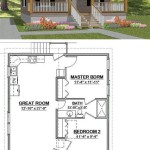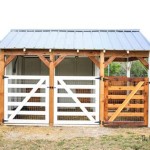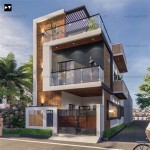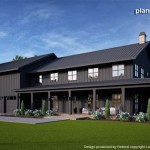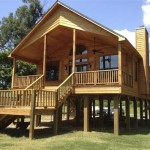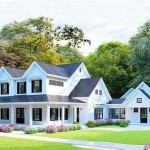Squirrel House Plans are blueprints or guidelines for constructing small structures designed to provide shelter and nesting spaces for squirrels. These plans typically include detailed instructions, materials lists, and assembly sequences to help individuals build suitable homes for these agile and curious creatures.
Squirrel houses serve a crucial role in urban and suburban areas where natural nesting sites like tree hollows are scarce. By providing a safe and secure environment, these structures help protect squirrels from predators, inclement weather, and extreme temperatures. They also provide a breeding ground for the animals, contributing to the preservation and expansion of squirrel populations.
In the following sections, we will explore diverse Squirrel House Plans, discussing their designs, materials, and construction techniques. We will also highlight factors to consider when choosing the appropriate plans based on specific species and habitats, ensuring that squirrels have access to comfortable and functional nesting spaces.
When selecting or creating Squirrel House Plans, it is essential to consider the following key points to ensure the well-being and comfort of the intended inhabitants:
- Appropriate Dimensions
- Multiple Entry Holes
- Ventilation and Drainage
- Predator Resistance
- Durable Materials
- Insulation and Warmth
- Cleanability and Maintenance
- Species-Specific Design
- Habitat Considerations
Taking these factors into account will help you provide a suitable and welcoming shelter for squirrels, allowing them to thrive and contribute to the ecological balance of their surroundings.
Appropriate Dimensions
Determining the appropriate dimensions for a squirrel house is crucial to ensure the comfort and well-being of its inhabitants. The size of the house should be large enough to provide ample space for the squirrels to move around, nest, and store food, but not so large that it becomes drafty or difficult to heat.
- Floor Area: The floor area of the house should be at least 12 inches by 12 inches (30 cm by 30 cm) for a single squirrel, and larger for multiple squirrels or larger species. A good rule of thumb is to provide at least 1 square foot (0.09 square meters) of floor space per squirrel.
- Height: The house should be tall enough to allow the squirrels to stand upright without touching the roof with their heads. A height of 12-18 inches (30-45 cm) is typically sufficient.
- Entry Hole Size: The entry hole should be large enough for the squirrels to enter and exit comfortably, but not so large that predators can easily enter. A diameter of 2-3 inches (5-8 cm) is suitable for most species of squirrels.
- Multiple Entry Holes: Providing multiple entry holes at different heights and locations allows the squirrels to escape predators and access the house from various angles.
By following these guidelines and considering the specific species and needs of the squirrels, you can ensure that the house you build is a comfortable and inviting shelter for its intended inhabitants.
Multiple Entry Holes
Providing multiple entry holes in a squirrel house is essential for the safety and well-being of the squirrels that will inhabit it. Here are some key reasons why:
1. Escape from Predators: Multiple entry holes allow squirrels to escape quickly and easily from predators. If a predator, such as a hawk or owl, approaches the house, the squirrels can quickly exit through a different hole, reducing the risk of being caught.
2. Ventilation and Airflow: Multiple entry holes also promote proper ventilation and airflow within the house. This helps to prevent the buildup of stale air and moisture, which can lead to respiratory problems for the squirrels.
3. Convenience and Accessibility: Multiple entry holes provide convenience and accessibility for the squirrels. They can enter and exit the house from different directions, making it easier for them to move around and access different parts of the house.
4. Social Hierarchy: In some squirrel species, there may be a social hierarchy within the group. Multiple entry holes allow dominant squirrels to control access to the house, while subordinate squirrels can still enter and exit without confrontation.
5. Cross-Ventilation: Multiple entry holes on opposite sides of the house can create cross-ventilation, which helps to regulate the temperature inside the house and prevent it from becoming too hot or too cold.
When designing a squirrel house with multiple entry holes, it is important to consider the size and location of the holes. The holes should be large enough for the squirrels to enter and exit comfortably, but not so large that predators can easily enter. The holes should also be placed at different heights and locations to provide the squirrels with multiple escape routes and access points.
Ventilation and Drainage
Proper ventilation and drainage are essential elements of Squirrel House Plans to ensure the health and well-being of the squirrels that inhabit them. Here are some key points to consider:
- Airflow and Moisture Control: Adequate ventilation helps prevent the buildup of stale air and moisture within the house. This is important for the respiratory health of the squirrels and helps to prevent the growth of mold and mildew.
- Temperature Regulation: Proper ventilation also aids in temperature regulation. During hot weather, ventilation allows warm air to escape and cooler air to enter, keeping the house at a comfortable temperature for the squirrels. Conversely, in cold weather, ventilation can be reduced to help retain heat within the house.
- Drainage: Good drainage is essential to prevent water from accumulating inside the house. This can occur during heavy rainfall or if the house is placed in an area that is prone to flooding. Proper drainage ensures that water can escape from the house, preventing it from becoming damp and uncomfortable for the squirrels.
- Placement: The placement of the squirrel house can also impact ventilation and drainage. Avoid placing the house in areas with poor air circulation or where water is likely to accumulate. Choosing a well-ventilated and elevated location will help keep the house dry and comfortable for its inhabitants.
When designing a squirrel house with proper ventilation and drainage, it is important to consider the size and placement of ventilation holes and drainage openings. Ventilation holes should be placed high on the house to allow warm air to escape, while drainage openings should be placed low on the house to allow water to drain out. It is also important to ensure that the house is not placed in an area where it is likely to be exposed to excessive moisture or flooding.
Predator Resistance
When considering Squirrel House Plans, predator resistance is a crucial factor to ensure the safety and well-being of the squirrels that will inhabit the house. Predators such as snakes, owls, and hawks pose a significant threat to squirrels, and it is important to design the house in a way that minimizes the risk of predation.
One key aspect of predator resistance is the use of sturdy and durable materials. The house should be constructed from materials that are difficult for predators to penetrate, such as metal, thick plywood, or solid wood. Avoid using thin or flimsy materials, as these can be easily chewed through or broken by predators.
Another important consideration is the placement of the house. The house should be placed in a location that is not easily accessible to predators. Avoid placing the house on the ground or in low trees, as these areas are more vulnerable to predators. Instead, place the house high up in a tree, away from branches that could provide access to predators.
Finally, consider incorporating predator-resistant features into the design of the house. This could include things like a metal baffle around the entrance hole to prevent predators from reaching inside the house, or a perch or platform outside the entrance hole that allows squirrels to survey their surroundings before entering the house.
By following these guidelines and carefully considering predator resistance in your Squirrel House Plans, you can help to create a safe and secure shelter for the squirrels that will inhabit it.
Durable Materials
When selecting materials for Squirrel House Plans, durability is of utmost importance to ensure the longevity and integrity of the structure. Squirrels are known for their chewing and gnawing habits, so the house must be constructed from materials that can withstand their activities and the elements.
- Pressure-Treated Wood: Pressure-treated wood is a popular choice for squirrel houses as it is resistant to rot and decay caused by moisture and insects. It is also relatively inexpensive and easy to work with.
- Cedar: Cedar is a naturally rot-resistant wood that is also known for its pleasant aroma. It is a good choice for squirrel houses as it is durable and can withstand the elements without the need for chemical treatment.
- Metal: Metal is an excellent choice for squirrel houses as it is extremely durable and resistant to chewing and gnawing. It is also easy to clean and disinfect, making it a hygienic option.
- Plastic: Durable plastics, such as high-density polyethylene (HDPE), can be used for squirrel houses. These plastics are resistant to rot, decay, and moisture, and they are also lightweight and easy to work with.
When choosing materials for your Squirrel House Plans, consider the climate and environmental conditions in your area. For example, if you live in an area with extreme temperature fluctuations or high humidity, you may want to choose a material that is resistant to warping or cracking. By selecting durable materials and following proper construction techniques, you can create a squirrel house that will provide a safe and comfortable shelter for its inhabitants for many years to come.
Insulation and Warmth
Insulation and warmth are essential considerations in Squirrel House Plans, particularly in areas with cold climates. Squirrels need a warm and insulated shelter to protect them from the elements and maintain their body temperature during the winter months. Here are some key points to consider:
- Insulating Materials: Various insulating materials can be used in Squirrel House Plans, such as fiberglass insulation, foam insulation, or natural materials like straw or shredded paper. These materials help to trap warm air inside the house, reducing heat loss and keeping the squirrels warm.
- Wall Thickness: The thickness of the walls in a squirrel house contributes to its insulation value. Thicker walls provide better insulation, as they create a greater barrier against heat loss. Consider using double walls or adding an insulating layer to the walls to enhance the thermal performance of the house.
- Draft-Proofing: Drafts can significantly reduce the effectiveness of insulation. Seal any cracks or gaps around the entrance hole, ventilation holes, and other openings in the house to prevent cold air from entering and warm air from escaping.
- Orientation: The orientation of the squirrel house can impact its warmth. Place the house facing south or east to take advantage of sunlight and natural heat gain. This will help to keep the house warmer during the day, reducing the need for additional insulation.
By incorporating these insulation and warmth considerations into your Squirrel House Plans, you can create a cozy and comfortable shelter for squirrels to thrive in, even during the coldest winter months.
Cleanability and Maintenance
Maintaining proper hygiene and cleanliness in squirrel houses is crucial for the health and well-being of their inhabitants. Regular cleaning and maintenance will help prevent the buildup of dirt, debris, and parasites, which can lead to health problems for the squirrels. Here are some key considerations for cleanability and maintenance in Squirrel House Plans:
Removable Roof or Door: A removable roof or door allows for easy access to the inside of the house for cleaning and maintenance. This makes it easier to remove old nesting materials, clean surfaces, and inspect the house for any damage or repairs.
Smooth Interior Surfaces: Smooth interior surfaces are easier to clean and disinfect than rough or textured surfaces. Avoid using materials that have crevices or cracks where dirt and debris can accumulate. Instead, opt for materials like metal or plastic that can be easily wiped down.
Ventilation and Drainage: Proper ventilation and drainage help to prevent the buildup of moisture and odors inside the house. Ensure that the house has adequate ventilation holes to allow fresh air to circulate and prevent the growth of mold and mildew. Additionally, drainage holes will allow any moisture to escape, keeping the house dry and comfortable for the squirrels.
Regular Cleaning: Regular cleaning is essential to maintain a clean and healthy environment for the squirrels. Remove old nesting materials and debris from the house, and wipe down the interior surfaces with a mild disinfectant solution. Be sure to rinse the house thoroughly with water after cleaning to remove any residual disinfectant.
By incorporating these design considerations and following a regular cleaning and maintenance schedule, you can ensure that your squirrel house remains a clean and healthy shelter for its inhabitants.
Species-Specific Design
When designing Squirrel House Plans, it is essential to consider the specific species of squirrel that will be using the house. Different squirrel species have different needs and preferences, so it is important to tailor the design of the house to the target species.
One important factor to consider is the size of the squirrel. Larger squirrel species, such as fox squirrels and gray squirrels, require larger houses with more space to move around and nest. Smaller squirrel species, such as red squirrels and flying squirrels, can make use of smaller houses with more compact dimensions.
Another factor to consider is the nesting habits of the squirrel species. Some squirrel species, such as gray squirrels, prefer to nest in tree cavities. In this case, a squirrel house that mimics the dimensions and shape of a tree cavity would be most suitable. Other squirrel species, such as fox squirrels, prefer to nest in dreys, which are leafy nests built in the branches of trees. For these species, a squirrel house that provides a sheltered and enclosed space would be more appropriate.
Finally, it is important to consider the climate and environment in which the squirrel species lives. For example, squirrel species that live in cold climates may require houses with additional insulation to protect them from the elements. Squirrel species that live in hot climates may require houses with good ventilation to prevent overheating.
By taking into account the specific needs and preferences of the target squirrel species, you can design a Squirrel House Plan that provides a comfortable and suitable shelter for its inhabitants.
Habitat Considerations
When designing Squirrel House Plans, it is essential to consider the habitat in which the house will be placed. Different habitats have different characteristics that can impact the design and placement of the house.
One important factor to consider is the availability of natural nesting sites in the habitat. If there are plenty of natural nesting sites available, such as tree cavities or dense vegetation, squirrels may be less likely to use a squirrel house. However, if natural nesting sites are scarce, a squirrel house can provide much-needed shelter and nesting space.
Another factor to consider is the presence of predators in the habitat. If there are many predators present, such as hawks, owls, or snakes, it is important to design the squirrel house with predator resistance in mind. This may include placing the house high up in a tree or using predator-resistant materials.
Finally, it is important to consider the climate of the habitat. If the climate is cold, the squirrel house should be well-insulated to protect the squirrels from the elements. If the climate is hot, the squirrel house should be well-ventilated to prevent the squirrels from overheating.
By taking into account the habitat considerations discussed above, you can design a Squirrel House Plan that is tailored to the specific needs of the squirrels in that habitat.










Related Posts


